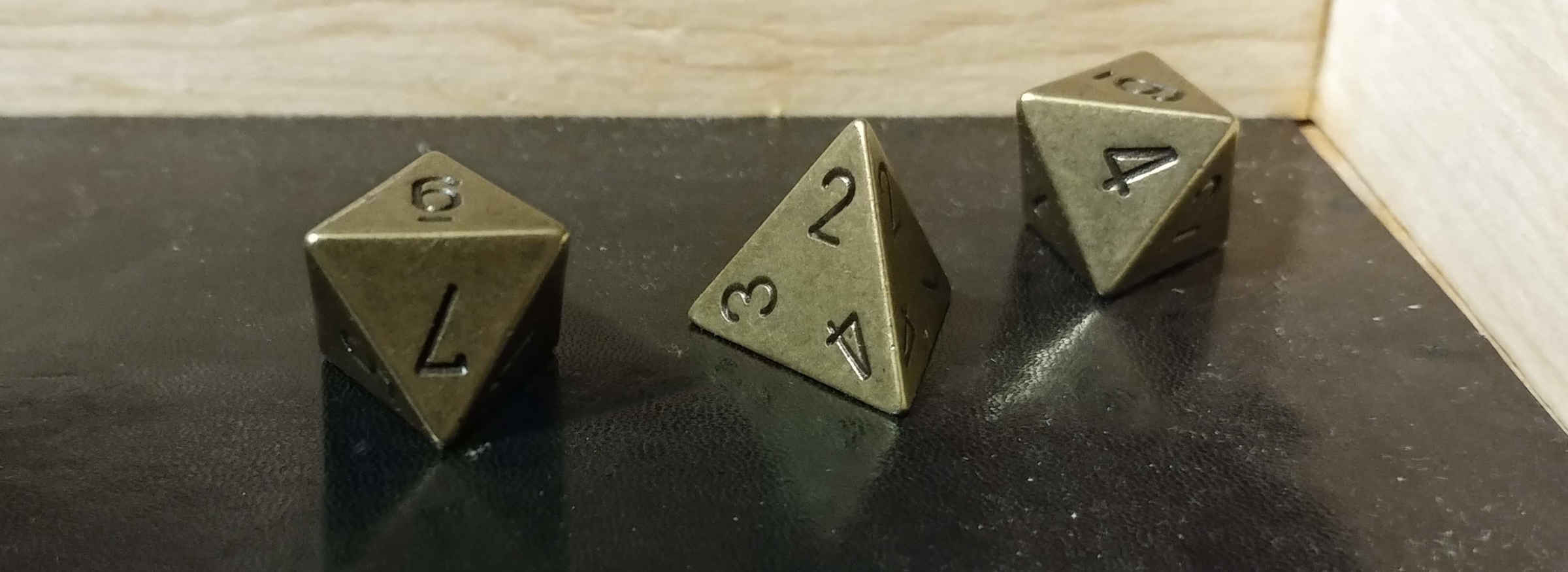Eights & Four
Eights & Four is a dice game commonly played throughout the Two Continents, often for gambling.
The game uses two eight sided dice and one four sided die. The actual method of rolling can vary by setting, the most common method for each player to simply rolling the three dice. The rolled values are then examined and the winner determined. The winner is the one with the highest ranked roll. If there is a tie, the tied players usually have roll off, rolling their dice a second time.
Eights & Four
Two eights and a four, the highest possible roll. Example: ⑧⑧❹
Triple
The same number on all three dice. Higher value dice rank higher. Example: ③③❸
Straight
Three sequential values. Since the four-sided die is included, must be no higher than ❹⑤⑥. Example: ②❸④
Double
Two dice with the same number. Higher value dice rank higher. For tied pairs, the higher off-die wins. Example: ③❸⑤ beats ③③❷
Standard
No matches, nothing sequential. Higher value dice rank higher. Example: ⑦③❶ beats ⑦②❶, which beats ⑤④❷
Roll Rankings
While there are variations, the following are the most generally accepted rankings.History
This game has changed very little since its conception centuries ago. However, in that time it has evolved from a simple pastime to a renowned game of changed, played not only to pass the time, but also for wagers ranging from the mundane to the unbelievable.
The name has also evolved. In ancient times it was known as gachuma lut z̀aynil. This name has changed to gachumaz̀ayn or gakuz̀an in some regions. But it is most often called "eights and four" in the local language.
Execution
In mundane versions of Eights and Four, the dice are just rolled and a winner determined. However, for higher-stakes betting, the following general procedure is used.
- Ante up, with ante varying per table.
- Players drop dice into their towers.
- Dice can be reviewed through a viewing window.
- First round of betting.
- First die revealed. The towers are designed to present the four-sided die first.
- Second round of betting.
- Second die revealed.
- Final round of betting.
- Final die revealed and winner determined.
Components and tools
The most basic version of eights and four can be played with three dice—one four-sided and two eight sided. Often each player has their own dice. Higher stakes games with multiple rounds of betting can have a complex dice rolling device designed to minimize cheating.
For example, the Desert Winds House of Chance in Nezhgub utilizes custom, hand-built "dice towers", designed to randomly toss dice about and settle them into slots where they cannot be changed after the roll. The player can look at the dice after the roll and dice are revealed one at a time, after each round of betting. Each tower is different, with a wide variety of designs available, from simple geometric designs, to ornate fanciful designs. Frequent players often have a favored "lucky" tower.
Participants
Besides the players, higher-stakes games generally have a judge (neutral adjudicator of results) or a banker (house-controlled player against whom all other players compete).



Comments